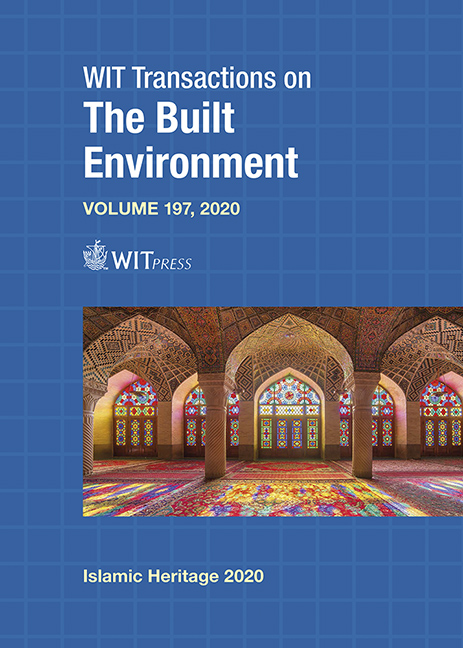GEOMETRICAL STRUCTURE OF ILLUSTRATIONS IN ISLAMIC MANUSCRIPTS: A CASE STUDY OF KALILA AND DEMNA ILLUSTRATIONS
Price
Free (open access)
Transaction
Volume
197
Pages
12
Page Range
223 - 234
Published
2020
Size
1,635 kb
Paper DOI
10.2495/IHA200191
Copyright
WIT Press
Author(s)
SAFAA S. JAHAMEH
Abstract
This study discusses the geometrical structure of Islamic illustrations. Many theories suggest that Islamic illustration uses particular structures, including those based on spirals and proportion; however, these theories generally only relate the structure of such illustrations to sacred Islamic symbolism without reviewing the craft of illustration or the skills of the illustrators. Many researchers studying Islamic manuscripts, including Deroche, who studied Islamic codicology, have instead highlighted the range of tools used in Islamic civilisation, pointing out that many geometrical tools, some of which are no longer extant, were used by book craftsmen, including multiple kinds of rulers (Mastara). Diverse studies have thus used geometrical analyses to study Islamic manuscripts; Polosin studied the geometry of an illuminated folio in a Quranic manuscript and found that Islamic craftsmen at that time were aware of geometry and page structure, while George studied early Quranic manuscripts and identified a structural system used in the design of Arabic calligraphy and page structure. These researchers also concluded that certain geometrical tools used by craftsmen in Islamic civilisation are unidentified today. This study thus explores the geometrical structure of Kalila and Demna illustration in Islamic manuscripts, these being examples of the key illustration types of two different time periods, the 14th century and the 16th century. This paper examines eight folios from each manuscript, analysing them geometrically both to ascertain any geometrical relationship between the manuscripts and to determine whether geometrical proportion was being used at the time of production. Moreover, the paper investigates any potential cues that may suggest the illustrators were using geometrical tools.
Keywords
illustrations, geometry, structure, proportion, Islamic manuscript, Islamic codicology




